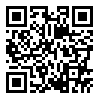BibTeX | RIS | EndNote | Medlars | ProCite | Reference Manager | RefWorks
Send citation to:
URL: http://frooyesh.ir/article-1-211-en.html
2- Tehran University
Background: assessment of psychopathy has gained much attention in the past few decades. The four-factor model of psychopathy has proved to be an efficient model for assessment of psychopathy in forensic and non-forensic samples. Several measures have been developed to capture the four-factor model. These four factors are labeled as interpersonal manipulation, criminal tendencies, erratic lifestyle, and callous affect. Research on psychopathy has remained quite limited in Iran. The present study aimed to validate a 20-item measure of psychopathy consistent with the four-factor model of psychopathy. Williams et al. (2007) model and high-loading items were subjected to a Confirmatory Factor Analysis (CFA). Moreover, reliability coefficients and gender differences were evaluated.
Methods: a convenience sample of 260 university students was recruited from Tehran, Iran. For each factor, a battery of 5 high-loading items (c.f., Williams et al., 2007) was prepared and translated into Persian following the standard back-translation technique. Of note, item 13 (I enjoy drinking and doing wild things) was altered a little to be consistent with Iranian culture. The response option was provided in a 5-point Likert-type format. Potential participants were approached and invited to take part in a psychological study about social behavior. Descriptive statistics, factor structure, internal consistency, and gender differences were evaluated.
Results: item 6 (I’ve stolen a motor vehicle) had the lowest mean while item 13 (I enjoy drinking and doing wild things) had the highest. For interpersonal manipulation, criminal tendencies, erratic lifestyle, and callous affect, the alpha coefficients were 0.55, 0.78, 0.70, and 0.52, respectively. Additionally, the full-scale alpha was 0.79. Goodness-of-fit indices suggested an acceptable fit for the hypothesized four-factor structure of the scale (CMIN/DF = 1.80, RMSEA = 0.056, CFI = 0.90, TLI = 0.88, and GFI = 0.91). An evaluation of gender differences indicated that men had higher scores in all four subscales (0.40 < d < 0.66) as well as the total score (d = 0.76).
Conclusion: the present findings supported the factorial validity and internal consistency of the 20-item self-report measure of psychopathy in Iranian university students. Consistent with previous findings, men showed higher psychopathy, as measured by this newly validated measure. This measure could capture the four-factor model of psychopathy. Therefore, this short scale may be used in future psychopathy research in Iran.
Received: 2016/03/2 | Revised: 2019/10/9 | Accepted: 2016/03/2 | ePublished: 2016/03/2
| Rights and permissions | |
 |
This work is licensed under a Creative Commons Attribution-NonCommercial 4.0 International License. |






